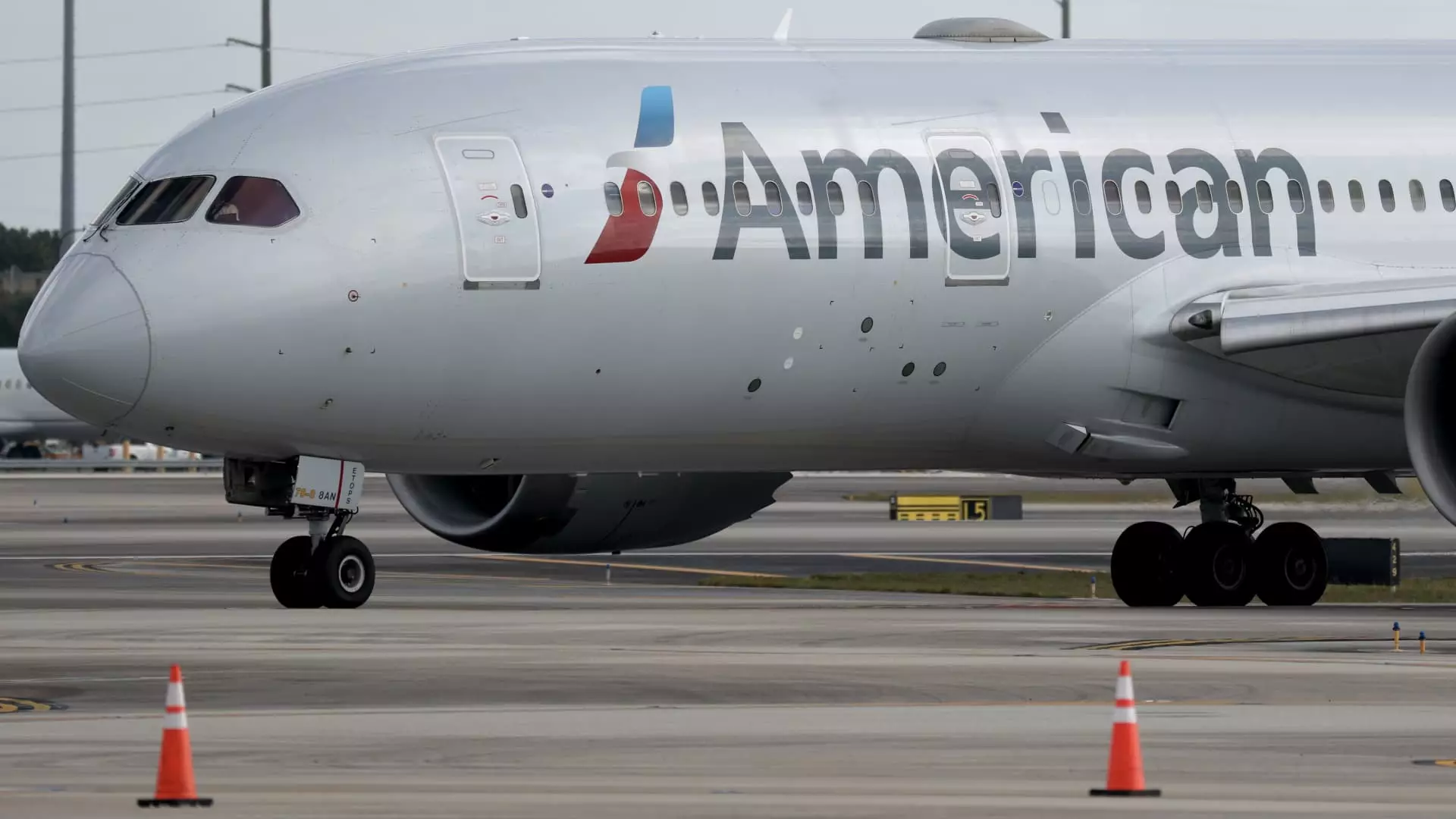American Airlines recently made waves by retracting its financial projections for 2025, joining a chorus of airlines struggling to navigate a maze of uncertain economic indicators. Such a move raises immediate alarm among investors and travelers alike. While the company’s CEO, Robert Isom, expressed a hope that the previous quarter’s strong results would cushion the blow, the reality of declining domestic leisure travel as February approached starkly contradicts this optimism. Domestic leisure travel, once considered a reliable source of revenue, has shown signs of vulnerability, indicating that American Airlines might be standing on shaky ground amidst a faltering economy.
Unit Revenue Dynamics
The initial optimism surrounding a 0.7% increase in unit revenue is misleading. This uplift is primarily attributed to international bookings and premium cabin sales, revealing a significant divide in consumer behavior. As American Airlines and its competitors like Delta and United Airlines have pointed out, it’s the more price-sensitive leisure travelers who are retreating, affecting overall revenue streams. This acknowledgment of a bifurcated market is a critical insight; it signals a growing trend where only wealthier travelers seem insulated from economic fluctuations. What does this say about the middle-class consumer? It suggests that American Airlines, and others in the sector, may need to recalibrate their offerings to address this emerging gap in demand.
Adverse Financial Indicators
The airline’s forecast for second-quarter revenue is equally sobering, estimating a downturn between 2% and 1% relative to the previous year. Analysts anticipated a modest growth of 2.2%, but the company’s struggles with capacity, adjusted earnings, and an unsettling capacity increase projection show a stark deviation from optimistic forecasts. A projected loss, now likely to present itself at 59 cents per share as opposed to the anticipated 99 cents, showcases a troubling trajectory. Recurrent losses and stagnant revenue showcase a possibly disastrous offset of efforts to reclaim a once-dominant corporate travel business.
Consequential External Factors
Moreover, the shadow cast by the tragic American Eagle Flight 5342 incident looms large over the airline’s performance narrative. Such events don’t merely represent tragic loss; they inflict dire reputational damage and further amplify consumers’ hesitance to engage with the airline. American Airlines must wrestle not only with tangible financial losses but also with the emotional weight of public perception and consumer trust. The airline is in a precarious position, needing to regain confidence whilst contending with broader economic pressures.
The Path Ahead
As the airline sector experiences turbulence, American Airlines must pivot to navigate these setbacks adeptly. The struggle to attract leisure travelers, prioritize safety, and reestablish robust corporate travel protocols will require innovative strategies. The company’s recent actions signal an awareness of these challenges, yet whether this translates into effective measures remains an open question. Only a strategic realignment can propel American Airlines back into an increasingly crowded and competitive travel landscape. The odds are steep, yet with calculated adaptation and a keen understanding of the shifting consumer dynamics, there is potential for recovery.


Leave a Reply